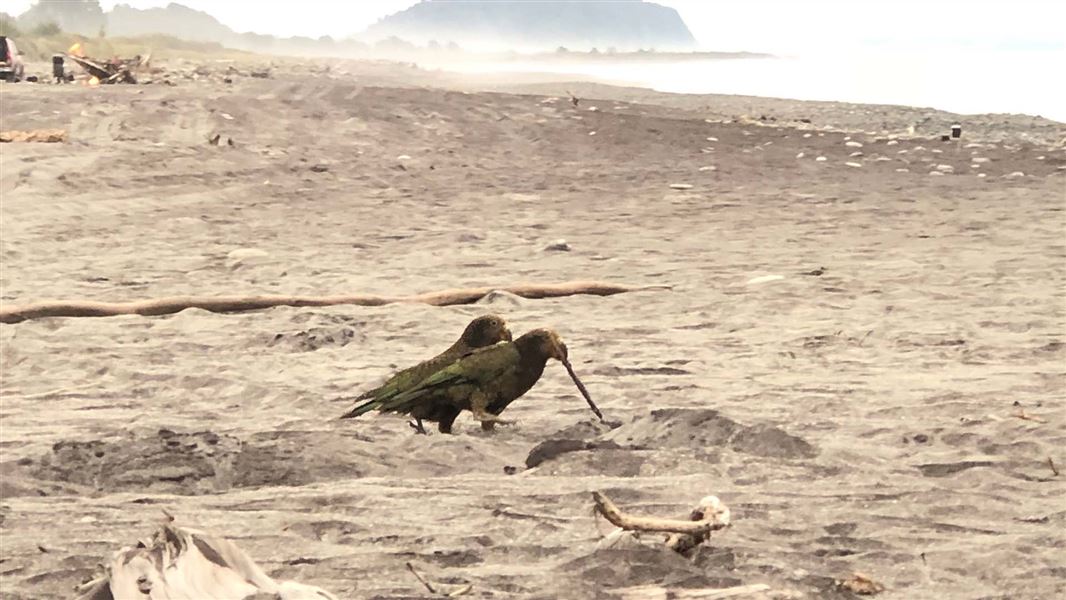Archived content: This media release was accurate on the date of publication.
Date: 27 January 2020
The two juvenile kea were spotted by a Ross local playing on a tree stump.
Nicole Kunzmann, Department of Conservation (DOC) Hokitika Operations Manager, says while kea are most often seen at higher altitudes, it is natural for kea to come right down to the coast.
"We know kea frequent the coast in Fiordland at Waitutu and Milford Sound, and also in Abel Tasman. We have even had reports of kea going out to fishing boats off Golden Bay in Tasman!"
"The kea seen near Ross Beach are juveniles that have left the nest and are exploring the world. Young kea are very inquisitive and curious and we have had reports that they are exploring around Ross township.
"We expect for some, this will be a source of delight, but for others, kea living in the area may pose some frustrations", says Nicole Kunzmann.
"They may be attracted to property in the area because they like something there, whether it be a yard full of vehicles or a prominent tree to roost in. Young kea, like young humans will get bored and hungry and eventually move on if they find nothing to eat or play with.
"It's really important that kea don't learn that humans and their property are fun and a source of food. We ask that people check their properties for potential 'kea toys' and food that kea might scavenge and if possible remove these items or make them unattractive.
"We can also put people in touch with the Kea Conservation Trust for advice on ways to make things unattractive to kea. At one mine-site a garden sprinkler proved to be a useful deterrent to kea that were posing a problem for the machinery there."
Kea are a threatened endemic bird, which are fully protected under the Wildlife Act, and it is an offence to harm them. Juvenile kea have a yellow colouring around their eyes and above their bill (the cere).
Contact
For media enquiries contact:
Email: media@doc.govt.nz
